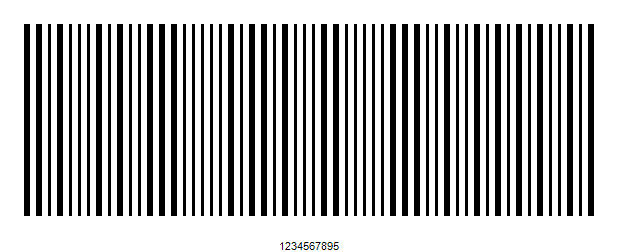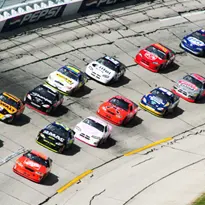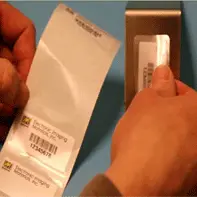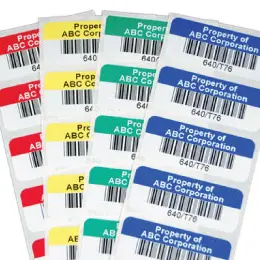One of the drawbacks to using this particular code is that it will only work with an even number of numeric characters. If there is an odd number of digits to encode, a zero is often added to the beginning of the code. Since the data security of Interleaved 2-of-5 is not quite as good as the popular alpha-numeric Code 39, adding a Check Sum or Digit would also work. Yet another way around this “pairs” requirement is to add five narrow spaces to the last digit.
Unlike other lineal types of barcodes, the bars and spaces in Interleaved 2 of 5 only have two widths – wide and narrow. What makes it so popular is that the data will be encoded in both the bars AND the spaces between the bars, thus achieving higher density by taking half the space of a Code 39 barcode. It is called “interleaved” because the data is interweaved between the bars and spaces. For instance, the first character will use the first five bars, while the second character will use the first 5 spaces. By doing this, two characters are encoded in the space of what 5 bars would normally take. Two of every 5 bars or spaces are wide and three are narrow. This explains why this symbology will only accept an even number of characters. It also explains where the term “2 of 5” comes from.
Unlike other barcodes, I 2 of 5 will often contain what are called “bearer bars” that create a frame around the entire code or simply two perpendicular bars running across the top and bottom of the code. It’s rather interesting to understand the history of those bars… the name “bearer bars” comes from the design of a metal grate or gate. Keep in mind too, that this code is commonly used on shipping boxes and the original way to print barcodes on cardboard involves stamping a printed image. To prevent barcode distortion when the stamp or print plate hits the box, bearer bars were added to strengthen the plate. Another solid incentive for using the bearers was discovered when people tried to scan the barcode at too sharp an angle. If that happens, the reader may not pick up all the data at the ends of the barcode and without realizing it, a valid translation will still be reported. The extra bars help prevent this from happening and also ensure a proper quiet zone. (These days, inkjet printing is becoming a preferred way to print barcodes directly on cardboard but bearer bars are still used because the barcodes can be so big and scanning may be done at high speeds in conveyor systems.)  Another place where I/L 2 of 5 with bearer bars is popular is on security badge labels where space constraints are a concern. Time clock readers typically require barcodes up to 18 digits in length so the compressed interleaving or interweaving is particularly useful on labels less than 3.00” long.
Another place where I/L 2 of 5 with bearer bars is popular is on security badge labels where space constraints are a concern. Time clock readers typically require barcodes up to 18 digits in length so the compressed interleaving or interweaving is particularly useful on labels less than 3.00” long.
There is also an older, Standard 2 of 5 (aka Industrial 2 of 5 or simply 2 of 5) that has been around since the 1960s; it is used in photofinishing, on airline tickets and warehouse sorting. It is a fairly simple low-density code that encodes data only in the width of the bars, not the spaces. Because it can encode any number of characters and not just an even number of values, it can easily incorporate an optional module or mod 10 check digit to improve the accuracy of the symbology. Like Interleaved 2 of 5, the wide bars are typically three times the width of the narrow bars, but the spaces are usually the width of the narrow bar. Code 2 of 5 with check sum: 





